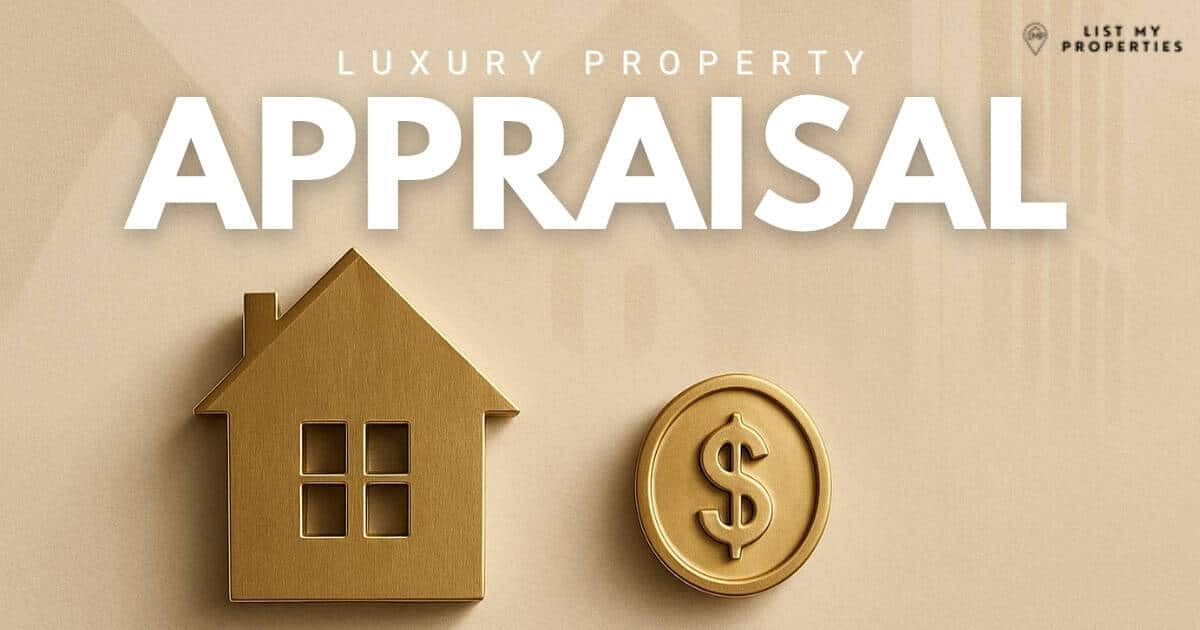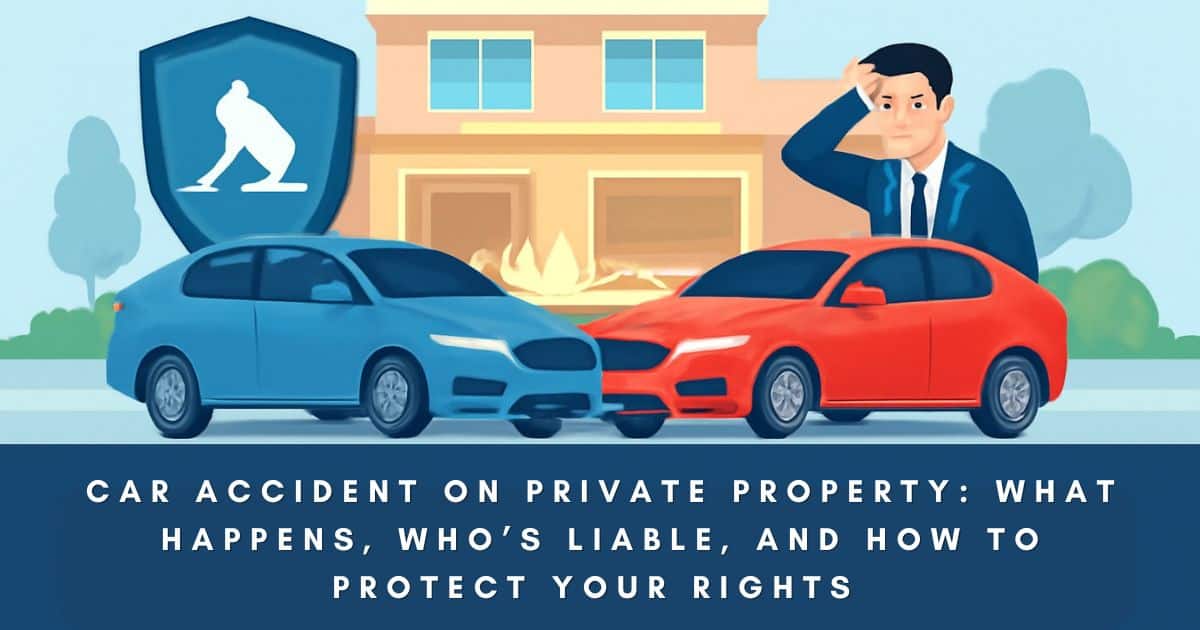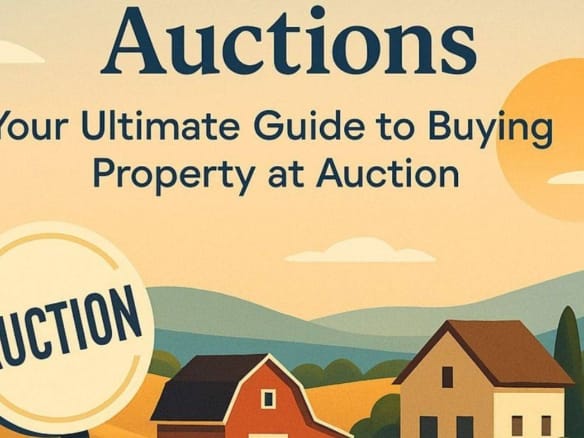A collision in a parking lot, a driveway, or any other private‑property space feels different from a crash on a public road. Yet the legal and insurance questions are just as complex. This article explains what happens when a car accident on private property, how liability is determined, whether car insurance covers accidents on private property, and what you should do immediately after the crash.
Why read this guide?
- It consolidates the most up‑to‑date 2025 statutes from every major state (Arizona, Florida, Texas, New York, etc.).
- It fills the gaps left by the top‑ranking pages missing state‑specific sections, and actionable “next‑step” checklists.
Table of Contents
Google AI Overview (AIO) – Quick Answer for Featured Snippet
When a car accident happens on private property, liability is usually decided by the same negligence principles that apply on public roads. The property owner may be liable only if the accident was caused by a dangerous condition they knew about and failed to fix. The at‑fault driver’s auto‑insurance policy typically covers the damages, but coverage can vary by state and by the type of policy (collision vs. liability). Victims should immediately document the scene, call the police (if required), exchange insurance information, and contact a personal‑injury attorney to protect their right to compensation.
Understanding a Private‑Property Car Accident
1.1 What Qualifies as “Private Property”?
- Private property includes parking lots, garages, driveways, shopping‑center plazas, and any land owned by a business, homeowner association, or individual.
- The legal status of the site matters because traffic laws that automatically apply on public roads may be different on private property. For example, a “right‑of‑way” rule may be set by the property’s rules on private property rather than state statutes.
Types of Private‑Property Accidents
| Type | Typical Setting | Common Cause |
|---|---|---|
| Parking‑lot collision | Open‑air lot, multi‑storey garage | Rear‑end, side‑swipe, failure to yield |
| Driveway crash | Residential driveway, commercial loading dock | Speeding, distracted driving |
| Business‑premises accident | Retail store lot, office complex | Poor lighting, potholes, obstructed signs |
| HOA‑managed lot | Community parking area | Inadequate maintenance, unclear signage |
Understanding the type of private property helps you anticipate which property owner may share liability.
Who Is Liable? Determining Fault on Private Property
The At‑Fault Driver’s Insurance Is Usually Primary
- Negligence is the legal standard: the driver who failed to exercise reasonable care is liable.
- Most auto insurance policies (liability, collision, comprehensive) cover accidents regardless of where they occur, unless the policy specifically excludes “off‑road” incidents.
When the Property Owner Can Be Held Responsible
A property owner may be liable only if:
- Dangerous condition existed (e.g., a pothole, broken traffic light, or inadequate lighting).
- The owner knew or should have known about the condition.
- The owner failed to repair or warn drivers in a reasonable time.
This is known as premises‑liability. In many states, the property owner is not automatically liable for driver error.
Comparative and Contributory Negligence
- Comparative negligence (most states) reduces the plaintiff’s recovery by their percentage of fault.
- Contributory negligence (e.g., Alabama, Maryland) can bar recovery if the plaintiff is even 1% at fault.
Understanding your state’s fault rule is essential when you determine liability.
Does Car Insurance Cover Accidents on Private Property?
Liability Coverage
- Bodily‑injury (BI) liability and property‑damage (PD) liability cover injuries to other people and damage to other vehicles, even on private property.
- The at‑fault driver’s insurance company will typically handle the claim, unless the driver is uninsured.
Collision Coverage
- If you have collision coverage, your own insurer will pay for damage to your vehicle regardless of fault, then pursue subrogation against the at‑fault driver.
Uninsured/Underinsured Motorist (UM/UIM) Coverage
- If the other driver lacks insurance, UM/UIM can cover your losses, provided your policy includes it.
State‑Specific Nuances
| State | Notable Rule |
|---|---|
| Arizona | “Private‑property” accidents are treated like public‑road accidents; liability insurance is mandatory. |
| Florida | No‑fault insurance applies only to personal‑injury protection (PIP); property damage still follows fault rules. |
| Texas | “Pure comparative negligence” – you can recover even if 99% at fault, but your award is reduced. |
| New York | Mandatory no‑fault for personal injury, but property damage follows traditional fault. |
Immediate Steps After a Private‑Property Accident
Secure the Scene & Take Photos
- Take photos of vehicle damage, surrounding area, traffic signs, and any property condition (e.g., potholes, broken lighting).
- Capture license plates, driver’s license, and insurance cards of all parties.
Call the Police (When Required)
- Some states (e.g., California, New York) require a police report for any accident involving injury or property damage over a certain amount.
- Even if the police do not come to the scene, file a report with the local department; the report number is valuable for insurance and litigation.
Exchange Information & Notify the Property Owner
- Provide your insurance information and obtain the property owner’s contact details.
- If the accident occurred in a parking garage or shopping‑center lot, ask for the property manager’s name and the location of any surveillance cameras.
Seek Medical Attention Immediately
- Even if you feel fine, medical attention is crucial. Some injuries (e.g., whiplash) manifest days later, and early documentation strengthens a personal‑injury claim.
Contact a Personal‑Injury Lawyer for a Free Consultation
- A car accident attorney can help you determine liability, preserve evidence, and negotiate with the insurance company.
- Most reputable firms, including ours, offer a free consultation and work on a contingency fee basis—no upfront cost.
Investigating the Accident: How Fault Is Determined
Review Surveillance Footage
- Many private‑property sites have CCTV. Request the footage from the property owner or security company.
Analyze the Scene Conditions
- Condition of the property (wet floor, pothole, inadequate signage) can be a contributory factor.
- A property inspection by an engineer may be needed to prove the property owner’s negligence.
Witness Statements
- Collect witness contact information and statements as soon as possible. Witnesses can corroborate your version of events and help determine fault.
Police Report Findings
- The police report often includes an officer’s opinion on who caused the accident. While not binding, it carries weight with insurers and courts.

Commercial Property Law Made Easy: The 2025 Guide for Landlords, Tenants & Investors

Luxury Property Appraisal: Main Factors That Impact Luxury Property Value

4D Property Solutions: The Best Guide for Property Management in Louis, Missouri
When the Property Owner Is Liable
Premises‑Liability Claims
- If the property owner failed to maintain safe conditions, you may file a premises‑liability claim in addition to a claim against the driver.
Common Property‑Owner Fault Scenarios
| Scenario | Example | Potential Owner Liability |
|---|---|---|
| Defective lighting | Dark parking lot, no visible stop sign | Failure to provide reasonable illumination |
| Pothole or uneven surface | Car hits a pothole, loses control | Failure to repair known hazardous condition |
| Improper traffic‑control devices | Missing “Yield” sign at a driveway entrance | Failure to install or maintain signage |
| Obstructed sight lines | Overgrown shrubbery blocking view of a crosswalk | Failure to keep property clear of hazards |
How to Prove Owner Negligence
- Document the condition with photos and videos.
- Obtain maintenance records from the owner (or request them via subpoena).
- Show that the owner knew or should have known about the hazard.
State‑Specific Guidance
Car Accident on Private Property – Arizona
- Arizona follows pure comparative negligence. Even if you are 90% at fault, you can still recover 10% of damages.
- Arizona Revised Statutes § 44‑3101 require property owners to maintain safe conditions on premises open to the public.
Car Accident on Private Property – Florida
- Florida’s no‑fault system applies only to personal‑injury protection (PIP). Property‑damage claims still follow fault rules.
- Florida Statutes § 768.28 allow a claim against a property owner if the accident was caused by a dangerous condition on the property.
Other Notable States (Brief)
| State | Key Point |
|---|---|
| Texas | “Pure comparative negligence”; Insurance Code § 541.060 covers private‑property accidents. |
| California | Vehicle Code § 16000 applies; property owners may be liable for “dangerous conditions” under Civil Code § 1714. |
| New York | Vehicle and Traffic Law § 1150; property owners have a duty of reasonable care under General Obligations Law § 5‑601. |
Dealing With an Uninsured Driver on Private Property
Uninsured Motorist (UM) Coverage
- If the at‑fault driver has no insurance, your UM coverage (if purchased) will cover medical expenses and, in many states, property damage.
Filing a Small‑Claims Suit
- You may sue the uninsured driver directly in small‑claims court for the amount of property damage and medical bills. Collecting may be difficult, however.
Pursuing the Property Owner
- If the accident was caused by a dangerous condition on the property, you can also pursue a premises‑liability claim against the property owner.
The Role of a Car Accident Attorney
Why Hire an Attorney Early?
- Attorney can investigate the accident, preserve evidence, and negotiate with the insurance company.
- Early involvement helps protect your right to compensation and prevents the insurer from offering a lowball settlement.
What a Lawyer Does for You
- Determine liability – driver, property owner, or both.
- File a claim with the at‑fault driver’s insurer and, if needed, a premises‑liability claim.
- Calculate damages – medical bills, lost wages, pain and suffering, and property damage.
- Represent you in court if settlement talks fail.
Choosing the Right Lawyer
- Look for EBC signals: years of experience, client reviews, and Bar Association membership.
- Many firms, including ours, provide a free consultation and work on a contingency fee basis—no win, no fee.
Documentation Checklist – What to Keep After the Accident
| Item | Why It Matters |
|---|---|
| Photos & videos of damage, property condition, and surrounding area | Proves negligence and supports fault arguments |
| Police report (or incident number) | Official record; required by many insurers |
| Medical records and bills | Quantifies pain and suffering and medical expenses |
| Repair estimates for your vehicle | Establishes property damage value |
| Witness statements (names, contact info) | Corroborates your version of events |
| Insurance policy declarations (yours and other driver’s) | Determines coverage limits |
| Correspondence with insurance adjusters | Shows good‑faith efforts and protects against bad‑faith denial |
| Property owner’s maintenance logs (if available) | Evidence for premises‑liability claim |
Common Misconceptions About Private‑Property Accidents
| Myth | Reality |
|---|---|
| “Private‑property accidents aren’t covered by my insurance.” | Most auto insurance policies cover accidents anywhere the vehicle is driven, unless specifically excluded. |
| “The property owner is always liable for accidents on their lot.” | Liability falls on the owner only if they created or failed to fix a dangerous condition. |
| “I don’t need a police report if no one is injured.” | Some states require a report for any property damage over a certain amount; insurers often request it. |
| “I can’t sue if the other driver is uninsured.” | You can pursue UM coverage, a small‑claims suit, or a premises‑liability claim against the property owner. |
| “I should settle quickly with the insurance adjuster.” | Quick settlements are often lowball offers; an attorney can negotiate a fair compensation you deserve. |
Frequently Asked Questions (FAQ)
1. Who is liable for a car accident on private property?
Liability usually rests with the at‑fault driver. The property owner may be liable only if a dangerous condition they knew about caused the crash.
2. Does car insurance cover accidents on private property?
Yes. Liability, collision, and UM/UIM coverage apply unless the policy specifically excludes “off‑road” incidents.
3. Do I need to report a car accident on private property?
A police report is required in many states for injuries or significant property damage. Even when not required, filing a report helps with insurance and legal claims.
4. Can you sue someone for a car accident on private property?
You can sue the at‑fault driver and, if applicable, the property owner for negligence.
5. How is fault determined in a private‑property car accident?
Fault is based on negligence—who failed to exercise reasonable care. Evidence includes photos, witness statements, surveillance footage, and the police report.
6. What should you do immediately after a car accident on private property?
Secure the scene, take photos, exchange information, call police (if required), seek medical attention, and contact a personal‑injury lawyer.
7. Can the property owner be held responsible for a car accident on their premises?
Yes, if the accident was caused by a dangerous condition the owner knew or should have known about and failed to fix.
8. What if the accident involves an uninsured driver on private property?
Use your UM/UIM coverage, file a small‑claims suit, or pursue a premises‑liability claim against the property owner.
9. Do traffic laws apply to car accidents on private property?
State traffic statutes generally apply, but private‑property rules (e.g., posted signs, HOA regulations) may also govern behavior.
10. How do you handle insurance claims for private‑property accidents?
Notify your insurer promptly, provide the police report, photos, and repair estimates, and let a car accident attorney handle negotiations.
How to Choose the Right Personal‑Injury Lawyer
- Experience – Look for attorneys who have handled private‑property car accidents and premises‑liability cases.
- EBC – Verify the lawyer’s education, Bar membership, and client testimonials.
- Free Consultation – A reputable firm offers a no‑cost, no‑obligation meeting to evaluate your case.
- Contingency Fee – Most personal‑injury lawyers work on a contingency basis (they get paid only if you win).
Our firm meets all these criteria and has successfully recovered millions for clients across Arizona, Florida, Texas, and New York.
Summary – Key Takeaways
- Liability: Primarily the at‑fault driver; property owners only if a dangerous condition caused the crash.
- Insurance: Standard auto policies (liability, collision, UM/UIM) cover private‑property accidents.
- Immediate Actions: Secure the scene, take photos, call police (if required), seek medical care, and contact a car accident attorney.
- Evidence: Surveillance footage, witness statements, and maintenance records are crucial for proving negligence.
- State Laws: Comparative negligence (AZ, TX), no‑fault for personal injury (FL), and strict premises‑liability rules vary—consult a local attorney.
- Uninsured Drivers: Use UM coverage, small‑claims court, or pursue the property owner.
- Legal Help: A qualified personal‑injury lawyer maximizes your compensation you deserve and protects your rights.
Conclusion
A car accident on private property may feel less formal than a highway crash, but the legal and insurance stakes are just as high. By understanding who is liable, how insurance works, and the steps you must take immediately after the incident, you can protect your health, your wallet, and your peace of mind. When in doubt, consult a seasoned car accident attorney—the sooner you act, the stronger your case will be.



Join The Discussion